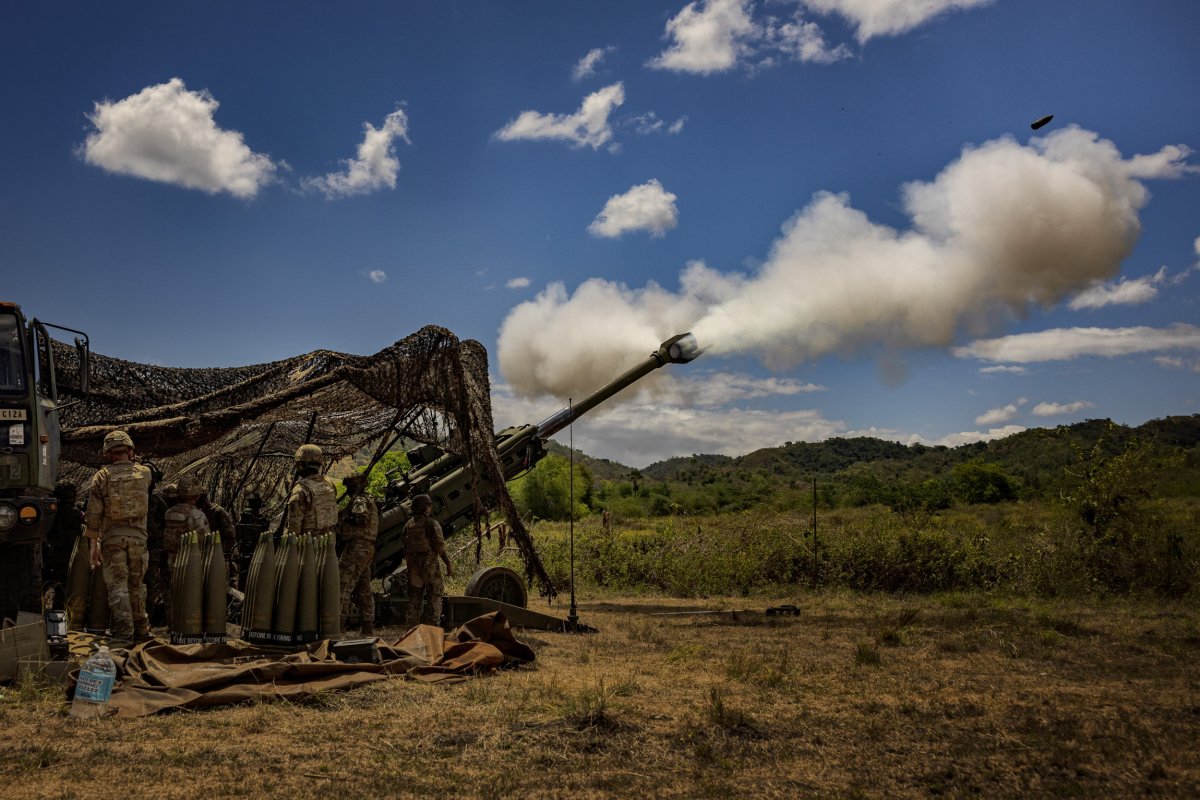The U.S. Army's deployment of a midrange missile system to the northern Philippines earlier this year has been described as "incredibly important" by a senior U.S. general.
Major General Marcus Evans, commanding general of the Hawaii-based 25th Infantry Division, discussed the significance of the deployment during a recent interview in Manila.
The deployment of the Typhon missile system allowed U.S. and Philippine forces to conduct joint training exercises in April, preparing for the potential future use of advanced heavy weaponry in the archipelago.
Typhon is seen as a key part of military cooperation in the Indo-Pacific region, where tensions with China are increasing.

"What it does collectively, it provides us the opportunity to understand how to employ that capability—the environmental challenges here are very unique to any other place in the region," Evans said.
Last month, Philippine military chief General Romeo Brawner Jr. said he wants the missile system to remain in the country "forever."
While the Typhon system was initially scheduled to leave the Philippines, three Philippine officials recently revealed that it will remain indefinitely, despite objections from China. It fires midrange Standard Missile-6 (SM-6) and Tomahawk Land Attack Missiles.
The system's presence ties into the broader U.S.-Philippines defense cooperation, which has been revitalized following a series of defense agreements, particularly the Enhanced Defense Cooperation Agreement (EDCA). Signed in 2014, the EDCA allows U.S. forces to access designated Philippine military bases on a rotational basis.

"Those are just incredibly important operations because you get to work in the environment, but most importantly, you're working alongside our partners here in the Philippines to understand how those will be integrated into their operations," Evans said.
Looming pressures from China over territorial disputes in the South China Sea have pushed the Philippines to boost its defenses.
Chinese Foreign Minister Wang Yi has argued that the presence of U.S. missiles in the region could undermine peace and heighten tensions. He says it "is not in the interests of regional countries" to do so.
Evans indicated that U.S.-Philippine military cooperation will continue to deepen, especially through joint exercises like Salaknib, which will feature cutting-edge U.S. technology, scheduled for next year. The drills aim to improve combat readiness and will expand in scope, he said.
"Conceptually, it is scheduled to be a larger, more complex exercise," Evans said, hinting at joint training operations across various terrains, from northern jungles to former U.S. military bases. "We're also planning on bringing new equipment to train alongside our Filipino army teammates that last year we did not have."
As treaty allies, the two countries ensure mutual defense in the event of an attack.
"Our job is to get 1 percent better each day alongside our Filipino army teammates," Evans said."Those relationships that are built, the readiness that is developed, should remove any doubt about the importance of our alliances."
This article includes reporting from The Associated Press.




















 English (US) ·
English (US) ·